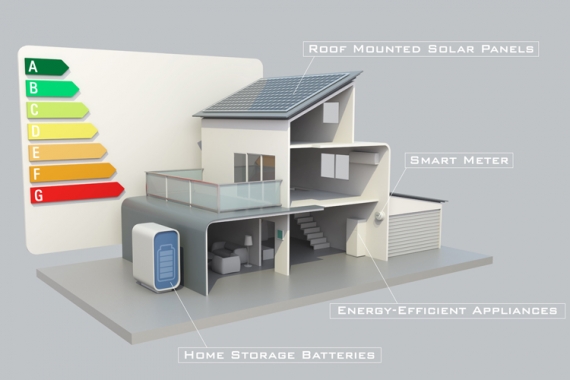Housing 2030
Financing our future
Brussels, 22 January 2014 | Published in Energy
How does the 2030 framework for Climate and Energy policies affect the future of our homes?
Climate is much more than a framework. Energy does not require just a couple of measures and policy packs. These are issues and challenges that require more serious and complete answers than vague objectives. Political responses that can have a true impact in real life.
Read MoreHousing is this particular aspect of everyone’s everyday life where the effects of the decisions made for climate and energy may be clearly observed.
CECODHAS Housing Europe is devoted to a sustainable future for the affordable housing sector. This can only be secured through very concrete and evidence-based political initiatives. The Secretary General of the organization, Claire Roumet stresses that:
“Apart from the targets and the roadmaps, we need a strategy on energy and climate that follows the real developments. This is the only way to have a stable framework, so that we can guarantee sufficient financing for our sector and consequently build more affordable homes to close the gap between demand and supply as well as to push forward energy efficient refurbishments”.
Home energy use accounts for 25 per cent of total energy consumption in the European Union according to the European Environment Agency. Given the “affordability” gap in the housing market and the need for energy consumption reduction of which 30% is due to residential sector, we need to refurbish affordable housing units at a massive scale. In fact, to refurbish 800.000 dwellings at the highest standards each year that will consequently create 200.000 jobs on a yearly basis, at least 16 billion Euros are needed…
The biggest uncertainty to invest in our sector is the constant changing of housing and of the, one way or another, related financing policies. Investors need to have a clear unchanged model to be attracted to support long-term projects. In our sector long-term financing is defined as a minimum of 25 years.
As far as energy efficiency is concerned the social housing organizations have been very active over the last decade. Beyond the direct effect on energy performance of the dwellings and the consequent effect on climate, energy efficiency measures indeed help to save costs in other policy areas with the impact on health being one of the most documented so far. However, the business model at EU level that would boost the energy efficient buildings along with their numerous advantages is not yet sound enough. The Energy Efficiency Directive has been mobilizing member states to create their renovation roadmaps (ar.4) and there is indeed a range of innovative financial models already in place. The most recent publication on financing Nearly Zero Energy Housing Projects with “Exemplary Financing Models across the European Union” that was compiled by the National Housing Federation (NHF) and CECODHAS Housing Europe presents some success stories, including enhanced loans, Pay As You Save (PAYS) schemes, guarantee programmes and Energy Service Companies (ESCO’s).
2014 will be the starting point for the Structural Funds of the period 2014-2020. Someone would expect from the European Commission to clearly link the financial instruments available with its policy initiatives in such a way that they can deliver the best possible results.
The decisions we make about the future of our homes affect directly both climate and energy. CECODHAS Housing Europe is committed to continue its work by filing concrete policy proposals, including a detailed European Construction Strategy, based on the input that its 43 member organizations from across the continent provide.